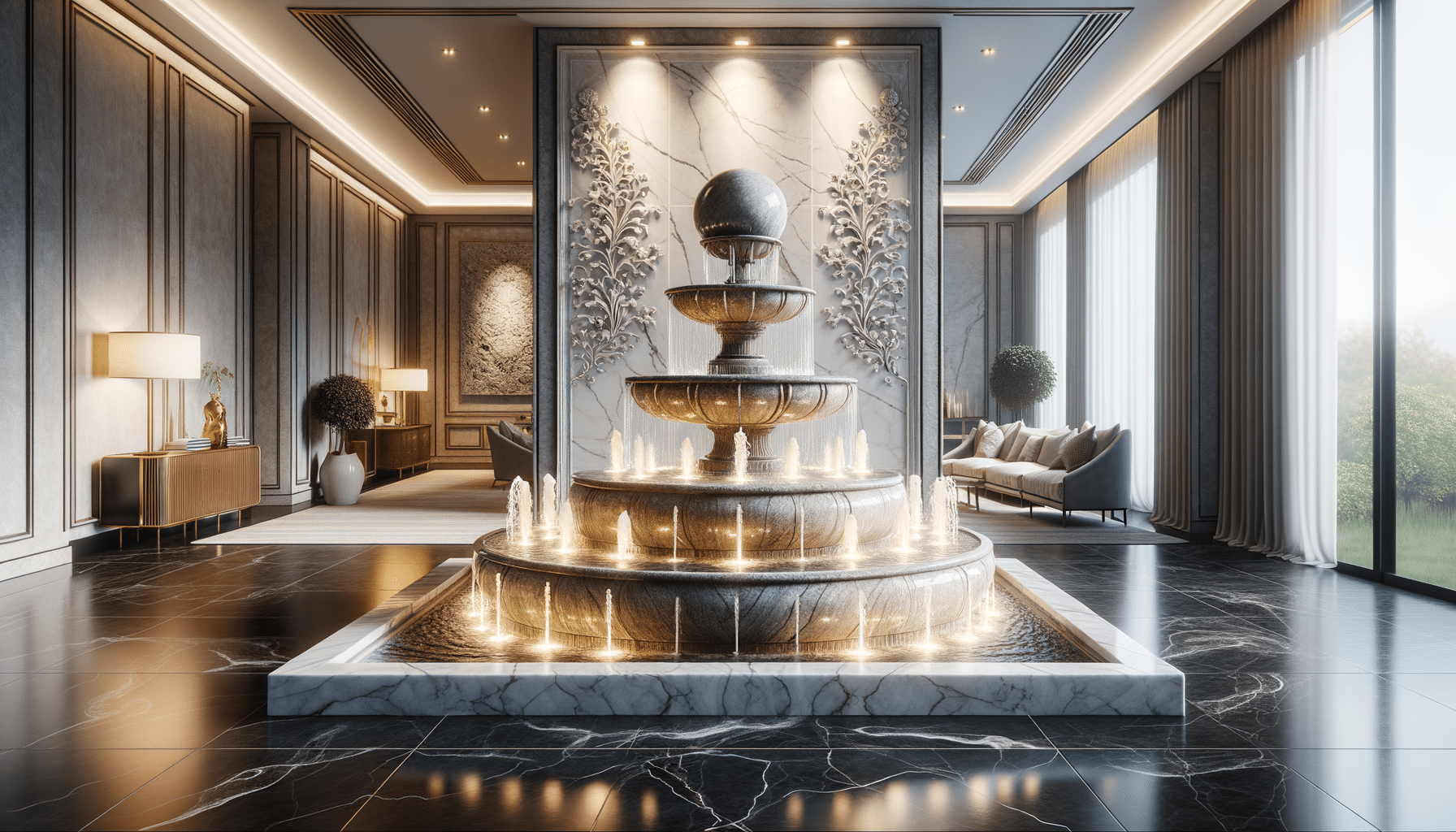
Enhancing Your Space with Indoor Fountains
Introduction to Indoor Fountains
Indoor fountains have long been cherished for their aesthetic and soothing qualities. These water features bring a touch of nature indoors, creating a serene environment that can enhance the ambiance of any room. The gentle sound of flowing water has been shown to reduce stress and promote relaxation, making indoor fountains a popular choice for both homes and offices. In this article, we will explore the various aspects of indoor fountains, including their benefits, types, placement considerations, maintenance, and how they can be integrated into different interior designs.
Benefits of Indoor Fountains
One of the most significant benefits of indoor fountains is their ability to improve air quality. As water circulates, it releases negative ions, which can help purify the air by attracting dust and other pollutants. This can be particularly beneficial in urban environments where air quality may be compromised. Additionally, the sound of flowing water can mask unwanted noise, providing a peaceful atmosphere conducive to concentration and relaxation.
Indoor fountains can also enhance the visual appeal of a space. They serve as a focal point in a room, drawing attention and adding a touch of elegance. The variety of designs available means that there is an indoor fountain to suit every style, from modern and minimalist to traditional and ornate. Furthermore, the presence of water is often associated with prosperity and good fortune in various cultures, adding a symbolic benefit to their aesthetic and practical advantages.
Types of Indoor Fountains
There are several types of indoor fountains to choose from, each offering unique features and benefits. Wall-mounted fountains are a popular choice for smaller spaces, as they do not take up any floor space. These fountains can be installed on any sturdy wall and come in various designs, including those made from stone, glass, or metal.
Tabletop fountains are another option and are ideal for desks, countertops, or small tables. These compact fountains are easy to move and require minimal installation. They often feature intricate designs and can include elements such as rocks, plants, or even small statues.
Floor fountains are larger and can serve as a dramatic centerpiece in a room. These freestanding fountains often feature cascading water and can be made from materials like marble, slate, or stainless steel. While they require more space, their impact on a room’s ambiance is unmatched.
Placement Considerations for Indoor Fountains
When deciding where to place an indoor fountain, consider both aesthetic and practical factors. Ideally, a fountain should be placed in a location where it can be easily seen and appreciated, such as a living room, entryway, or office reception area. Ensure that the fountain is placed on a stable surface and that it is easily accessible for maintenance purposes.
It is also important to consider the electrical and water supply requirements of the fountain. Most indoor fountains require a power source to operate the pump, so proximity to an electrical outlet is essential. Additionally, ensure that the fountain is placed in a location where water splashes will not damage flooring or furnishings.
In terms of feng shui, water features are often placed in the wealth sector of a home or office, which is typically the southeast corner. This placement is believed to attract prosperity and abundance, adding another layer of consideration to the placement of indoor fountains.
Maintenance and Care of Indoor Fountains
Proper maintenance is crucial to ensure the longevity and functionality of an indoor fountain. Regular cleaning is necessary to prevent the buildup of algae and mineral deposits, which can affect the appearance and operation of the fountain. It is recommended to use distilled water in fountains to minimize mineral buildup.
The pump, which is the heart of any fountain, requires special attention. Ensure that it is kept clean and free of debris to prevent clogging. It is also advisable to periodically check the water level, as evaporation can lower it, causing the pump to run dry and potentially burn out.
In addition to regular cleaning, it is important to inspect the fountain for any signs of wear or damage. This includes checking for cracks in the basin or any loose components. Addressing these issues promptly can prevent more significant problems in the future and ensure the fountain continues to operate smoothly.
Conclusion: Bringing Tranquility Indoors
Indoor fountains offer a unique blend of aesthetic appeal and practical benefits, making them a worthwhile addition to any space. Whether you are looking to create a calming environment in your home or enhance the ambiance of your office, an indoor fountain can provide a touch of elegance and tranquility. By carefully considering the type, placement, and maintenance of your fountain, you can enjoy the soothing presence of water indoors for years to come.


